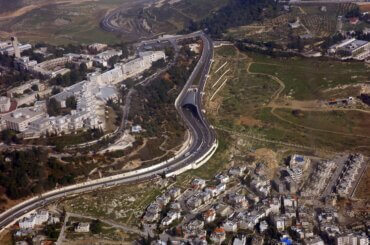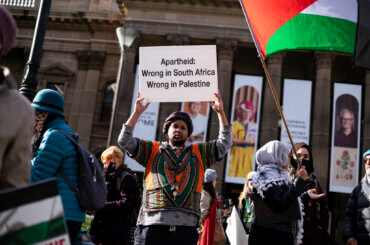Oh, Weakness
On the way from Brooklyn to Jenin I stopped for a bit of a rest in Tel Aviv and saw that the community of creative artists was still in an uproar around the Ariel Culture Hall issue. I think that some things should be said in the name of militant art and the more radical voices of the artists who signed the petition. In my humble opinion, the argument is not only about Ariel and the Green Line [1949 ceasefire line] but also a debate about the nature of art itself. Or in the words of philosopher Alain Badiou: what is militant art today, and is it actually possible?
What one needs to understand is that art – perhaps distinct from culture – is not supposed to be welcoming, and creating bridges that span nations and cultures is not its job. Militant art is the art of the weak, the person who barely exists in the public sphere. The person whose density is hardly noticed in the political world, the one whose opinion is taken into account by no-one. Militant art is the artist’s ability to act from a condition of near-total disappearance and to create unrivaled power from that position of weakness. Michael Handelzalts wrote, with true concern for the actors, that “the actors will be the ones who pay the price.” And I say that when all is said and done, the actors are the only ones who stand to gain from this, because while the terrible occupation will probably not end due to their protest, but they may become free of the stultifying embrace of a narrow-minded establishment.
The boycott on them by the right-wing should be seen as a blessing. It is a legitimate boycott, which brings into focus the civil war between fascists and humanists. The government’s threats to cut budgets should also be seen this way, since the entire process helps unveil the hoax of Israel democracy around the world and can start separating Israeli art from Israeli politics, which is rather like surgery to separate conjoined twins. Perhaps it will be from the near-absolute nothingness, from our complete defeat by the nationalist spirit which blows throughout our country, that militant art can be made here, too.
It is important to say here that establishment art is not always wrong or bad – wonderful things have been created in that way, throughout all of history. Despite this, the greatest artists knew when to break the contract with the establishment devil. Handelzalts is correct in saying that if the artists do now bow their heads they will be defeated by the state. But those who are prepared to take a risk for art will also be the ones who bring into being the beginning of a new art. That is the reason that I followed my friend Juliano to Jenin: that is where I felt the power of weakness, or art’s ability to say something new. Or as my friend, Hezi Leskali, once wrote in his horribly simple poem, “Oh, Weakness.”
A Few Words On The Artists’ Organization Against Livnat
Freedom of creation is an issue worth fighting for, but in our case, it is not the point we are dealing with. We are dealing here with a much more dramatic struggle, with action against the occupation, with the struggle for the right of the children in Jenin to see an excellent play being performed in Haifa in up-to-the-minute Arabic, or their elementary right to travel freely to Lydda and hear a hip-hop concert by Dam.
Many of the cinematic artists who signed the petition supporting the Ariel resisters have previously collaborated with the occupation regime in a worldwide rebranding of Israel as an enlightened state. They smeared those very artists who responded to the Palestinian call for an academic and cultural boycott of Israel and said that they were using an unacceptable tactic, that of a cultural boycott. I cannot deny being very gratified to see those very same cinematic creators taking that very-same strategy, albeit a tad late. However, if we all agree to admit the obvious fact that the settlers are not the primary persons responsible for the ongoing occupation, and that it is, rather, the elected government of Israel, which has carried this blame over the years, we can understand that a cultural and academic boycott on any government institution is a legitimate boycott for the promotion of peace and justice in nonviolent ways.
At the end of the day, I hope that there is no intention to build an impassable wall along the Green Line that will separate Jew from Jew. Rather, there is an honest desire to break down the walls which separate Palestinian from Palestinian. Many people are sick and tired of separation walls and racist selection. Many of us just want to experience an open space where audiences and actors, Jews and Arabs, can move freely together in the joint space of Israel-Palestine.
This article is from Udi Aloni’s Brooklyn-Jenin column he is writing for the Israeli website Ynet about his experience living between New York City and the Jenin refugee camp, where he is teaching a film production class. You can read the entire Brooklyn-Jenin series here. This article was translated by Dena Shunra.

